Today we live in a digital age in which technology is embedded deeply in all spheres of our life. In this essay I would like to discuss how the development of new technologies blurred the difference between various types of the visual media in the last three decades. In my opinion we need to rethink and reconceptualise what we call films, television, games, and animation in terms of the moving image.
Citizen Journalism
Different approaches will be compared in the respect of the analysis of different types of media. I will mention the opinion of early film theoreticians, and elaborate their analysis into the unified term of the moving image in the context of the digital revolution in which we are immersed.
Three decades ago the process of creating films, cartoons and television series was completely different and it was easy to distinguish the unique visual languages characteristic of each one of them (I will later go through specific examples). Theorists belonging to the different media forms were writing their works trying to prove that the form deserved to be seen as a unique medium and form of art.
In this context:
• Rudolf Arnheim (1974), André Bazin (1967), S. M. Eisenstein (1949), Siegfried Kracauer (1971) saw film as a unique medium and tried to distinguish it from other mediums.
• Paul Wells (1998) analysed animation and acknowledged its place in visual media. The research done by Wells, and other authors (Bendazzy 1994; Frierson 1994), legitimised the art of animation and admitted its importance as an individual form of the medium. Furthermore, Paul Wells believes that Preston Sturges used the cartoon to demonstrate that the world and environment created in cartoons were very different from the live version of the world, and that is why cartoons deserve to be recognised as a separate form in their own right.
• Mark J. P. Wolf (2001) carried out thorough investigation of the video games and concluded
that it is its own an ―artistic medium‖ and ―cultural entity‖.
Just thirty years ago (―T0‖ here after in this essay) the expressive context of film, animation and video games was completely different. To illustrate this argument, let’s consider the following examples:
The Looney Tunes – is a traditional hand-drawn 2D animation (Looney Tunes Classic ca. 2011).
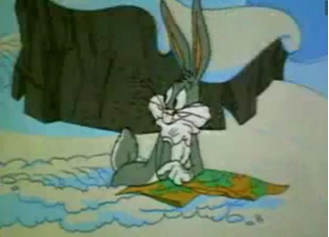
Figure 1. Still from a cartoon Looney Tunes (Looney Tunes Classic ca. 2011)
The heroes of the animation are moving in a static environment. The motion is unevenly sampled
Superman (1978)
This film is well known for a extensive of visual effects which were created before the digital era. Even though the animation was already used in this film to make the action more convincing, we can clearly see that they were staying completely different forms of visual language.
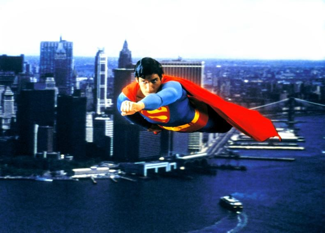
Figure 2. Superman 1978 (Superman 1978 ca. 2011)
Space Invaders (1978) – is a 2-dimencional game which was considered to be revolutionary for the game industry of that time. The game was first released in black and white. Later cellophane was added to simulate orange and green color.
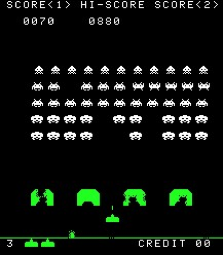
Figure 3. Space Invaders (Space Invaders ca. 2011)
As we can see from the examples above, film, animation and game looked very different at time T0, and were created using completely different technologies. Based on this analysis I would like to conclude that in time (T0) it made sense to use different terms for film, animation and video games.
Opinions, ideas and theories are subject to the historical time on which they are forged, in this sense if I was writing this essay ten years ago I would share the opinion of theorists Arnheim, Bazin, Kracauer, Bendazzy, Wells, Wolf about independency of the different forms. As we will see, in the digital era we live today (―T1‖ hereafter), this differentiation is no longer relevant.
In order to develop the ideas a definition for the ―moving image‖ is required. The definition of the term given by Noel Carroll (1996) is a natural starting point for the analytical purposes of this write-up. Carroll (1996, p.70) was one of the first persons who saw the importance of defining moving image and he was a visionary of some kind for doing this. His definition of
―moving Image‖ consists of five principles:
― x is a moving image (1) only if x is a detached display, (2) only if x belongs to the class of things from which the impression of movement is technically possible, (3) only if performance tokens of x are generated by a template that is a token, and (4) only if performance tokens of x are not artworks in their own right and (5) only if it is two dimensional.‖
Carroll’s definition is applicable in T0, but cannot be used in T1 due to the fifth principle. Carroll did not envision the possibility of the development of 3D technology and holograms in a such scale that it became ordinary part of our lives. It is indisputable that 3D movies deserve to be called moving image to the same extend as 2D movies are.
As it was discussed in class and in the notes of Professor Paula Callus during the first term, Carroll’s definition liberates film/ animation/ video from the confinement of a medium. Paraphrasing Callus, Carroll’s definition creates an academic space in which we can consider the commonalities shared by the different art forms. It is be possible to restrict film history as a part of the history of moving images.
Professor Peter Kiwitt (ca. 2011) expands Carroll’s definition and understanding of moving images by including the capability of recording (with or without sound) in any medium and technology, a ―portrayable moment‖. Kiwitt’s approach is functional with regards to displaying movement, and is a meta-definition term for multiple forms that encompass media, such as films, videos, games, television.
Currently, in T1, we live in a digital era, in which none of the forms of art is unique isolated or has predominance over the others. Therefore in T1 it makes sense to talk about moving image, rather than about separate terms.
The second half of the 1990s had tremendous meaning for the transformation of the moving image culture. The principles of digital filmmaking shifted away from the traditional principles. And this happened not just in Hollywood. In 1990s individual computers became less expensive. Simultaneously key software packages, such as Adobe Photoshop, Adobe Illustrator, 3D-MAX, Adobe After Effects, Alias Maya and others became available. Affordability of these tools allowed animators, graphic designers, illustrators, compositors to work from home as freelancers or open their open animation and VFX studios.
Manovich (1997) noticed in his analysis that different software packages ―... originally designed to be used by professionals working in different media‖ started to mix and mutate to be used for different purposes. It was the case that Alias Maya, initially created for doing animation was used by film professionals to create virtual backgrounds for the movies.
By the end of the 1990s, software manufacturers improved their packages and made them compatible with one another. As a result it became possible to combine different file formats and file operations into one software platform. For example, a texture could be created in Adobe Photoshop and exported to Maya; completed and textured Maya model could be later moved into Shake where it would be combined with digital video and sound. This is just a very simple example, but it demonstrates the possibilities which became opened to the designers at the end of 1990s. Manovich (2007) states that an ‖invisible revolution― took place.
Different types of media which used to exist and develop almost independently – live-action cinematography, animation, TV commercials, music videos, computer and video games and other types of moving-image sequences started to be combined and mixed in many ways. Manovich (2007, p.9) calls this process ―...hybridization, or deep remixability, of previously separate media techniques and media languages‖... ―By the end of the decade, the ―pure‖ moving-image media became an exception and hybrid media became the norm.‖
To illustrate how Manovich’s remixabilty can be traced in the current professional practices, let’s discuss some examples of ―different media‖ and show how digital technology transformed their look, broadened the technology used for their creation and blurred the ―art forms differentiation‖.
Films:
The movie Tron: Legacy (Team- Artooz, 2011) with its ―...stunning visual landscape never before seen—or imagined‖ makes us believe the unbelievable. To achieve this effect a complicated blend of techniques was required as well as many new which had to be developed.
With the technology we have today, anything seems to be possible. We can easily shoot an actor on blue screen (Fig. 4) and later add computer generated background (Fig. 5), change colors, add visual effects and create the final desired result.
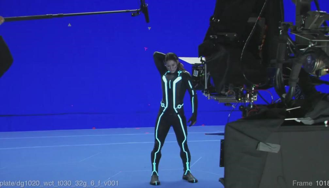
Figure 4. An actor on a Blue Screen, still from a video (The Making of Tron Legacy , 2011)
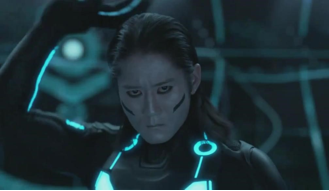
Figure 5. An actor on a CG, still from a video (The Making of Tron Legacy , 2011)
Even the age of the actor does not matter any longer. Using the new technologies we can replace his head with a CG head (Fig. 6).
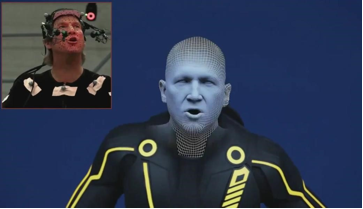
Figure 6. Modelled Head of an Actor, still from a video (The Making of Tron Legacy , 2011)
From these examples we can see that the role of the actors is diminished in the era of digital cinema. If before the main process of film production was live-shooting, today it is just one of the many processes. Once the live-action process lost its privileged role, it became just a raw material for the main process - digital editing: modelling, texturing, animating, adding effects, compositing, morphing (Fig. 7, see the actor in the middle on CG environment).
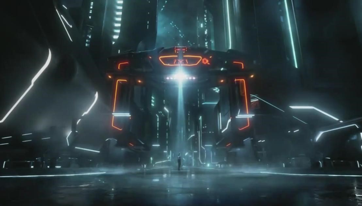
Figure 7. Cmputer Generated Background, still from a video (The Making of Tron Legacy , 2011)
It must be said that digital step requires a long process of editing individual frames or whole scenes one by one. Manovich (1996) noticed that this manual modification of the frames indicates the return of the cinema of nineteenth century, when images were hand-painted and hand-animated. In this context digital compositing can be seen as an extension of the cell animation techniques. I agree with the conclusion of Manovich (1999, approx. 8 screens): ―Digital cinema is a particular case of animation which uses live action footage as one of its many elements... Born from animation, cinema pushed animation to its boundary, only to become one particular case of animation in the end‖.
It also must be noticed, that live action footage is no longer the unique provider of a video for the film.. More and more often we see completely digital sets appearing in the movies (Fig. 8).
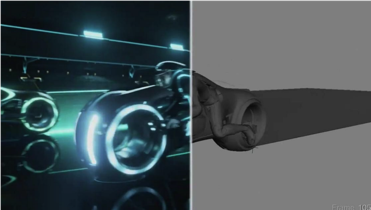
Figure 8. Fully Computer Generated Set, still from a video (The Making of Tron Legacy , 2011)
The question arises: ―If the movie shot is fully computer generated, what distinguished it from animation?‖
Commercials:
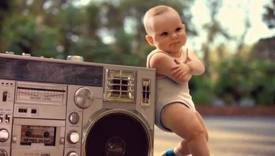
Figure 9. Evian Baby, still from a video (Evian Roller Babies international version, 2011)
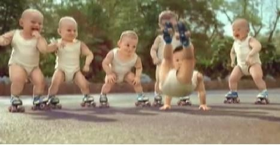
Figure 10. Evian Baby, still from a video (Evian Roller Babies international version, 2011)

Figure 11. Evian Baby, still from a video (Evian Roller Babies international version, 2011)
This commercial is the latest demonstration of how the principles and techniques from different media merged in one piece.
The team of animators from MPC used Maya to model full computer graphics bodies of the babies. The heads of computer generated bodies were later replaced with live-action heads of real kids. Huge amount of matte painting was done to extend the park environment. ―Another challenge was to create realistic skin texture and match the different skin colours. To achieve this, the 2D team composited together multiple layers and carried out general clean-up of the plates‖ (MPC, 2011).
Without knowing that this short movie was advertising, the audience might think that it is part of a film. Why does this happen?
It is interesting to notice that the process of creating a commercial movie is very similar today to the process of film production. This fact can be supported by the words of film director of Tron, Kosinski (2011): ―... a lot of the technology we’re using is stuff I’ve used bits and pieces of in commercials‖.
The visual similarity of the shots from commercial with the movie shots, as well as analogous production process, allows me to conclude that commercials and films are merging together.
Interactive Media:
Websites is another good example of how cinematic means of perception became embedded in our lives. If the user loads the interactive page of Harry Potter
http://harrypotter.warnerbros.com/harrypotterandthedeathlyhallows/mainsite/index.html he will be immediately plunged into the world of cinema.
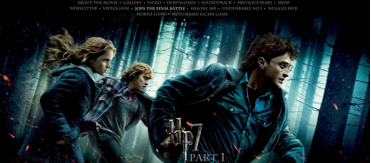
Figure 12. Harry Potter, still from website (Harry Potter, 2011)
The user can easily navigate between different options of menu and change his virtual world from the movie to the game.
Another example is website of the author of Harry Potter J. Rowling http://www.jkrowling.com/en/index.cfm
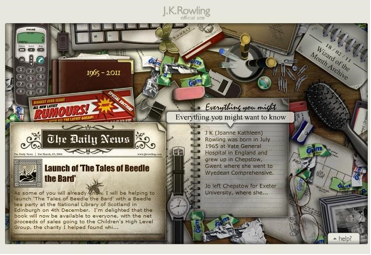
Figure 13. Rowling website, still from website (Rowling website, 2011)
This website is a hybrid of webpage with a game. It allows user to ―play‖ with various items lying on the table and get information depending on the choice. Different insects are moving on the virtual table and add more feeling of reality.
Games:
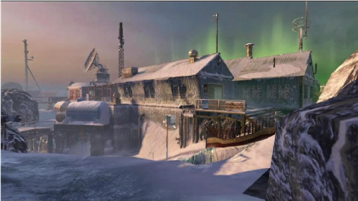
Figure 14. Call of Duty, still from website (Call of Duty, 2011)

Figure 15. Call of Duty, still from website (Call of Duty, 2011)

Figure 16. Call of Duty, still from website (Call of Duty, 2011)
The Game Call of Duty: Black Ops is a great representation of the game which uses cinematic language to create mood and atmosphere and establish the narrative. Camera angles and depth of field, dramatic lighting help to create a complex and very cinematic virtual world. The whole game is built as a combination of interactive fragments requiring player’s action and video sequences. This integration allows the user to identify himself with one of the characters and therefore creates a deeper engagement with the story. For some moment the player believes that it is really him who is running, travelling around the world, following the orders, hunting.
From the technical point of view the production process of the game was as demanding as the production of a movie. The techniques used were identical to those which are normally used in films: live-footage with blue screen, modelling, texturing, animation, keying, matte painting, compositing. Even motion-capture technology was applied to create realistic movement.
This is another bright example, which demonstrates how different visual media blur together.
Art:
There are many artists today who work with moving image. William Kentridge is one of those who developed his personal style of hybrid media.
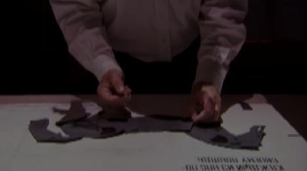
Figure 17. Digital Art, still from the video (Art:21—Art in the Twenty-First Century" Season Five Trailer (Fall 2009), 2009)

Figure 18. Digital Art, still from the video (Art:21—Art in the Twenty-First Century" Season Five Trailer (Fall 2009), 2009)
William integrates traditional hand-made animation with film in his work. Drawings for animation are made with pieces of black paper arranged in a certain way. William’s animated films are then built by filming a drawing, making modifications, and filming it again. This process repeats numerous amounts of times. When the film is done it will be displayed in a room by eight projections.
Video movie:
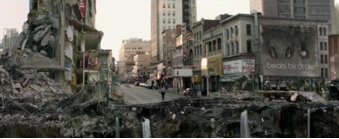
Figure 19. Eminem, still from the video (Eminem – Not Afraid, 2009)>

Figure 20. Eminem, still from the video (Eminem – Not Afraid, 2009)
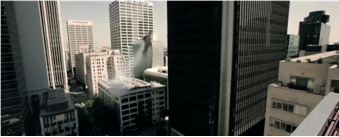
Figure 21. Eminem, still from the video (Eminem – Not Afraid, 2009)
This video clip of Eminem is a good example of how the medium of music video is getting merged with the mediums of computer animation and film.
In this clip many visual effects can be seen which had been done using modelling and visual effects tools such as Maya, Houdini, Nuke. The computer generated imagery tightly integrates with live-footage, which just two decades ago was hardly possible. We also see the application of cinematography principles: interesting camera angles, transitions, lighting effects.
Almost every music video also has its narrative today.
The combination of the factors described above make a viewer engaged with the clip. When Eminem is flying as a superman in a realistic environment, it possible to follow his story and it is no longer possible to distinguish if the audience is watching a video clip or a film.
A close look at the examples of different media forms allowed me to make the following conclusions:
1) There is the simultaneous occurrence of different media within each of them.
(Animation in film, film in music video, games and commercials, film and animation in art forms, etc.)
2) Examples of different media forms look so similar that it is often impossible to distinguish between them.
3) All the media forms have similar production process, which can be formalised by the following scheme:
Pre-production(storyboard, animatics, etc.)->
Production (R&D, modelling/texturing/lighting, effects, etc.)->
Post-production (effects, matte painting, keying, compositing, etc.)
4) The set of skills required to create a piece of work of particular form is nearly the same for all forms. Thus the professional in computer graphics can easily move from film production to commercials, from commercials to animation.
The factors described above serve as support to call the different forms of visual media in digital era by one term – ―Moving Image‖, however there are people who would argue this opinion. Peter Kiwitt (ca. 2011, approx. 4 screens) expresses his view as following:
―There is no doubt digital innovations have expanded what is possible, and that expansion has altered and added production practices. But these are production practices with a small ―p‖ that remain under an overarching cinema methodological umbrella. From sound to color to widescreen to digital, with evolutions from ―MTV editing‖ to the photorealistic performance capture of Avatar, innovation after innovation, cinema remains cinema.‖
I disagree with Peter Kiwitt who calls ―production practices with a small ―p‖‖. To my mind, the technological achievements are outstanding and deserve appreciation. To some extent it is possible to agree with Kiwitt, in the sense that cinema and other mediums will never disappear completely in a moving image, but will stay as its forms. Looking at the big picture, my personal choice will be to operate the term of moving image.
The convenience of using the term moving image instead of separate names comes also from the consumers.
The target audience of cinematic products generates a demand for the cross-products. For example when Avatar was released, simultaneously with the movie hybrid, a computer game was released. The complex animation and real action involved in the production were simultaneously used for the products that were delivered to the consumers. From a descriptive point of view it makes sense to talk about the moving image, given that the moving images content of both products came from the same production, varying only in its technical specifications and purpose of use.
In conclusion it should be said that by analysing the development of different types of media, an interesting trend has been noticed. All described types of media, have gone through a cycle in which each one of them started developing in its own way, growing and trying to become an independent form of media. Carroll (1996) expressed it as following:
―.. Each attempts to have itself taken seriously within the culture by means of promoting itself as an art form‖
With arrival of the digital technology all the different paths of different media forms naturally turned in one direction and formed an independent medium of new quality Moving Image. But this is a new moving image, which combines the achievements of many years of many people working in different areas. It is important today to see the value of this common knowledge and use the achievements for further development.
Thus cinematographic principles, used in gaming and Animation will allow creating the same emotional effect as films do (―Kung fu Panda‖). The effect of integration of CGI into movies to some extent I see as the same as effect from the invention of photography. When the responsibility of the artist was no longer the realistic representation of the world, they could free their hands and enjoy real art. In the same way the CGI techniques, brought into the movies, allow film directors today to create imaginary worlds which were born in their minds and deliver them to audiences in full realism and brightness (―Avatar‖).
There is no sense in arguing about the independency of separate forms in the digital age. If somebody does so, he is arguing against the availability of the variety of techniques we have today, which arrived from all forms of the medium and merged together.
While elaborating this essay and constructing this conclusion, it was interesting to discover that Manovich (1999, p.7) has similar point of view:
―What gets remixed today is not only content from different media but also their fundamental techniques, working methods, and ways of representation and expression. United within the common software environment, cinematography, animation, computer animation, special effects, graphic design, and typography have come to form a new metamedium. A work produced in this new metamedium can use all the techniques, or any subset of these techniques, that were previously unique to these different media.‖
The time has come today, when it is better to speak of the moving image, instead of continuing to talk about separate forms.
References
Arnheim, R., 1974. Art and Visual Perception: A Psychology of the Creative Eye. USA: University of California Press.
Artooz. Global art and design company, 2011. The Making Of TRON: Legacy (2010) Movie.
Bazin, A., 1967. What is Cinema. London: University of California Press.
Bendazzi, G., Cartoons: One hundred years of cinema animation. London: John Libbey Cinema and Animation.
Carroll, N., 1996. Theorizing the moving I mage. New York: Cambridge University Press
Call of duty, 2011. Available from: www.callofduty.com/hub [Accessed 15 Feb 2011]
Eisenstein, S., 1949. Film Form: Essays in Film Theory. New York: Hartcourt.
Frierson, M., 1994. Clay animation: American highlights 1908 to the present. New York:
Twayne.
Rowling official site, 2011. Available from www.jkrowling.com/about/
[Accessed 17 Feb 2011]
Kiwitt, P., ac.2011. Divergent Definitions from a Production Perspective. What is Cinema in a Digital Age? Available from: peterkiwitt.wordpress.com/what-iscinema/ [Accessed 14 Feb 2011]
Kracauer, S., 1971. Theory of film: The redemption of physical reality. London: Oxford University Press.
Manovich, L., 1997, Cinema as a cultural interface. Available from:
mybu.bournemouth.ac.uk/webapps/portal/execute/tabs/tabAction?tab_tab_group_id=_29_1 [Accessed 02 Feb 2011].
Manovich, L., 2007, Understanding Hybrid Media. Available from:
manovich.net
[Accessed 02 Feb 2011]
Manovich, L., 1999. Digital Cinema and the History of a Moving Image. Scribd. Available www.scribd.com/doc/454078/Digital-Cinema-and-the-History-of-aMovingImage [Accessed 16 Feb 2011]
Space Invaders [photograph]. Wikipedia. Available from:
en.wikipedia.org/wiki/Space_Invaders [Accesses 15 Feb 2011].
Superman 1978 [photograph]. Wallpapers. Available from: wallpaperstock.net/superman-1978_wallpapers_17470_1152x864_1.html [Accessed 17 Feb 2011]
Videosonar.com, 2011. Looney Tunes Classic. Available from:
videosonar.com/2/tag/Looney.html [Accessed 16 Feb 2011].
Wells, P., 1998. Understanding Animation. New York: Routledge.
Wolf, M., 2002. The medium of the video game. New York: University of Texas Press.
YouTube. 2011. The Making of Tron Legacy. Available from:
www.youtube.com/watch?v=qdNhtSDHM7k [Accessed 15 Feb 2011].
YouTube. 2011. Evian Roller Babies international version. Available from: www.youtube.com/watch?v=kncHhlUZ_tk
[Accessed 15 Feb 2011].
YouTube. 2011. Eminem - Not Afraid. Available from: www.youtube.com/watch?v=j5-yKhDd64s
[Accessed 15 Feb 2011].
YouTube. 2009. Art:21-Art in the Twenty-First Century" Season Five Trailer (Fall 2009).
Available from: www.youtube.com/watch?v=cv38gcP_rwY [Accessed 15 Feb 2011].
2011, Evian wins Gold Award for Best Visual Effects. MPC. Available from:
www.youtube.com/watch?v=qboOR4kwzPM
[Accessed 15 Feb 2011]
